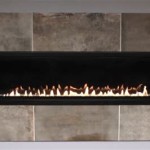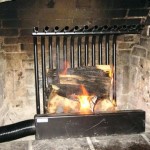Tiles Suitable For Fireplace Hearth
The fireplace hearth is the non-combustible area directly in front of and surrounding a fireplace. Its primary function is to protect the flooring or surrounding combustible materials from sparks, embers, and radiant heat produced by the fire. Selecting appropriate tiles for a fireplace hearth is a crucial decision, as the tiles must withstand high temperatures, be durable, and complement the overall aesthetic of the living space. The decision process involves considering several factors, including the type of fireplace, the size and shape of the hearth, the desired style, and the specific properties of different tile materials.
The regulatory requirements surrounding fireplace hearths vary depending on the type of fireplace and local building codes. Generally, wood-burning fireplaces require a larger hearth area due to the higher risk of sparks and embers escaping. Gas fireplaces, on the other hand, may have less stringent requirements. It is essential to consult local building codes and regulations before installing a fireplace or renovating an existing hearth to ensure compliance and safety.
Key Considerations for Tile Selection
Choosing the right tiles for a fireplace hearth involves careful consideration of several key factors. These factors affect both the functionality and the aesthetics of the hearth.
Heat Resistance: The primary function of a hearth is to protect against heat. Therefore, tiles must be able to withstand high temperatures without cracking, warping, or discoloring. Certain materials are inherently more heat-resistant than others. For example, natural stone tiles like granite and slate generally exhibit high heat resistance. Porcelain tiles are also a viable option if they are rated for high-temperature use. It is imperative to check the manufacturer's specifications to confirm the tile's suitability for fireplace hearth applications.
Durability: The hearth is a high-traffic area, often subjected to foot traffic, dropped objects, and cleaning. The tiles must be able to withstand these stresses without chipping, scratching, or breaking. Porcelain tiles, known for their density and hardness, are a durable choice. Natural stone tiles like granite are also highly durable. The durability of a tile is often measured by its PEI (Porcelain Enamel Institute) rating, which indicates its resistance to abrasion. A higher PEI rating signifies greater durability.
Maintenance: The hearth area is prone to accumulating soot, ash, and dirt. Tiles should be easy to clean and resistant to staining. Smooth, non-porous tiles are generally easier to clean than textured or porous tiles. Porcelain and glazed ceramic tiles are relatively easy to maintain. Natural stone tiles may require sealing to prevent staining. Regular cleaning with appropriate cleaning products is essential to maintain the appearance and longevity of the hearth tiles.
Aesthetic Compatibility: The hearth is a prominent feature in a room, and the tiles should complement the overall decor and style. The color, pattern, and texture of the tiles should harmonize with the fireplace surround, the flooring, and the furniture. A wide range of tile styles are available, from classic and traditional to modern and contemporary. Selecting tiles that align with the desired aesthetic creates a cohesive and visually appealing space.
Tile Materials Commonly Used for Fireplace Hearths
Several tile materials are commonly used for fireplace hearths, each with its own advantages and disadvantages.
Porcelain Tiles: Porcelain tiles are a popular choice due to their durability, heat resistance, and versatility. They are manufactured by firing clay at high temperatures, resulting in a dense and non-porous material. Porcelain tiles are available in a wide range of colors, patterns, and sizes, and they can mimic the look of natural stone, wood, or other materials. Their low water absorption rate makes them resistant to staining and easy to clean. However, high-quality porcelain tiles can be relatively expensive.
Ceramic Tiles: Ceramic tiles are another common option, although they are generally less durable and heat-resistant than porcelain tiles. They are also made from clay but are fired at lower temperatures. Ceramic tiles are more porous than porcelain tiles and may require sealing to prevent staining. They are available in a wide range of colors, patterns, and sizes, and they are generally more affordable than porcelain tiles. However, they may not be suitable for high-heat applications or areas with heavy foot traffic.
Natural Stone Tiles: Natural stone tiles, such as granite, slate, marble, and travertine, offer a unique and elegant look. They are highly durable and heat-resistant, making them suitable for fireplace hearths. Each stone tile has its own natural variations in color, pattern, and texture, adding character and visual interest to the hearth. However, natural stone tiles can be more expensive than porcelain or ceramic tiles, and they may require sealing to protect them from staining and moisture damage.
Slate Tiles: Slate is a fine-grained, metamorphic rock that offers excellent heat resistance and durability. Its naturally cleft surface provides a rustic and textured appearance. Slate tiles are available in a range of colors, including gray, black, green, and purple. They are relatively easy to maintain and resistant to staining. However, slate can be prone to chipping or flaking if not properly sealed.
Granite Tiles: Granite is an igneous rock known for its exceptional hardness and durability. It is highly resistant to heat, scratches, and stains, making it an ideal choice for fireplace hearths. Granite tiles are available in a wide range of colors and patterns, from speckled to veined. They are relatively easy to clean and maintain, requiring minimal sealing.
Marble Tiles: Marble is a metamorphic rock prized for its elegant appearance and veined patterns. While beautiful, marble is more porous than granite and slate, making it more susceptible to staining and etching. It requires regular sealing and careful maintenance to preserve its appearance. Marble is best suited for decorative hearths that are not subjected to heavy use or high heat.
Installation Considerations for Hearth Tiles
Proper installation is crucial for the performance and longevity of fireplace hearth tiles. The installation process involves preparing the subfloor, applying mortar, setting the tiles, and grouting the joints. It is recommended to hire a qualified tile installer to ensure that the tiles are installed correctly and meet all safety requirements.
Subfloor Preparation: The subfloor must be clean, level, and structurally sound to provide a stable base for the tiles. Any cracks or imperfections in the subfloor should be repaired before tiling. A cement backer board is typically installed over the subfloor to provide a durable and water-resistant surface. The backer board should be properly secured to the subfloor with screws or nails.
Mortar Application: A thin-set mortar is used to adhere the tiles to the subfloor. The mortar should be mixed according to the manufacturer's instructions and applied evenly to the subfloor using a notched trowel. The size of the notch on the trowel should be appropriate for the size and type of tile being installed. It is important to work in small sections and apply enough mortar to ensure proper adhesion.
Tile Setting: The tiles should be carefully placed on the mortar bed, ensuring that they are level and aligned. Tile spacers are used to create uniform grout joints. The tiles should be pressed firmly into the mortar to ensure a strong bond. Any excess mortar should be removed from the surface of the tiles before it dries.
Grouting: Once the mortar has cured, the grout joints can be filled with grout. The grout should be mixed according to the manufacturer's instructions and applied to the joints using a grout float. Excess grout should be removed from the surface of the tiles with a damp sponge. The grout should be allowed to cure according to the manufacturer's instructions before the hearth is used.
Sealing: Some natural stone tiles, such as slate and marble, may require sealing to protect them from staining and moisture damage. A penetrating sealer should be applied to the tiles according to the manufacturer's instructions. The sealer will help to prevent liquids from penetrating the pores of the stone and causing stains. The sealer should be reapplied periodically to maintain its effectiveness.
Selecting and installing appropriate tiles for a fireplace hearth is a critical aspect of fireplace safety and aesthetics. By considering the factors outlined above, homeowners can ensure that their hearth provides adequate protection, complements their decor, and stands the test of time.

Handmade Fireplace Tiles Bert May

Hearth Olde English Tiles
Heat Resistant Tiles Can You Use Around A Wood Burner British Ceramic Tile
:fill(white)/www.toppstiles.co.uk/static/uploads/2021/10/Fireplace-Tiles-All-Mobile.jpg?strip=all)
Fireplace Tile Ideas Inspiration Advice Topps Tiles

Fireplace Tiling Tiler Bristol For Fire Hearth

Plain Square Glazed Tiled Fireplace Hearths Twentieth Century Fireplaces

What Are The Best Tiles For A Fireplace Rotherham Centre
/102661017-6a23c040b71843379188b96b21ac1a08.jpg?strip=all)
How To Tile A Fireplace

5 Tips For Designing Fireplaces With Cement Or Ceramic Tile Belk

Plain Square Glazed Tiled Fireplace Hearths Twentieth Century Fireplaces








